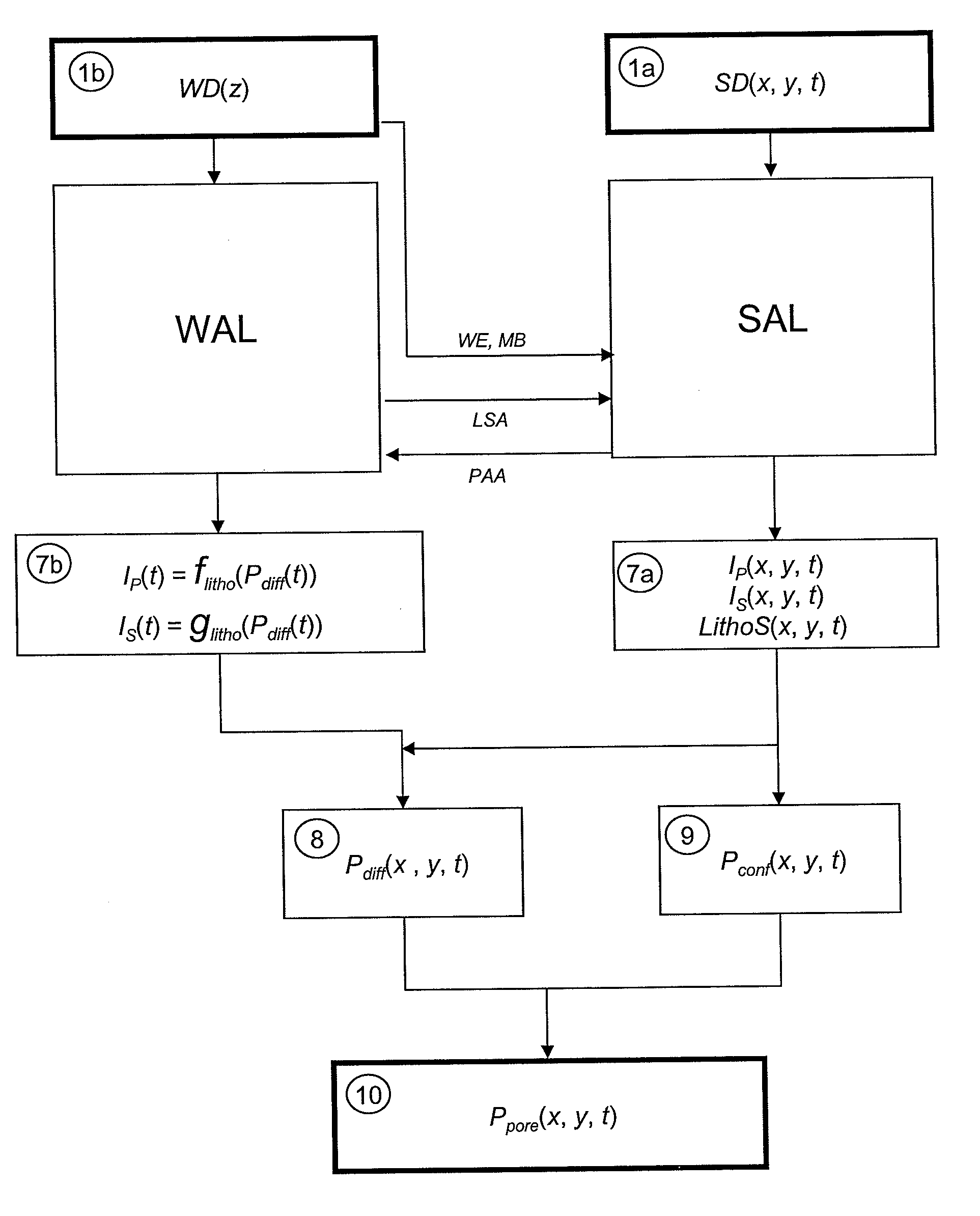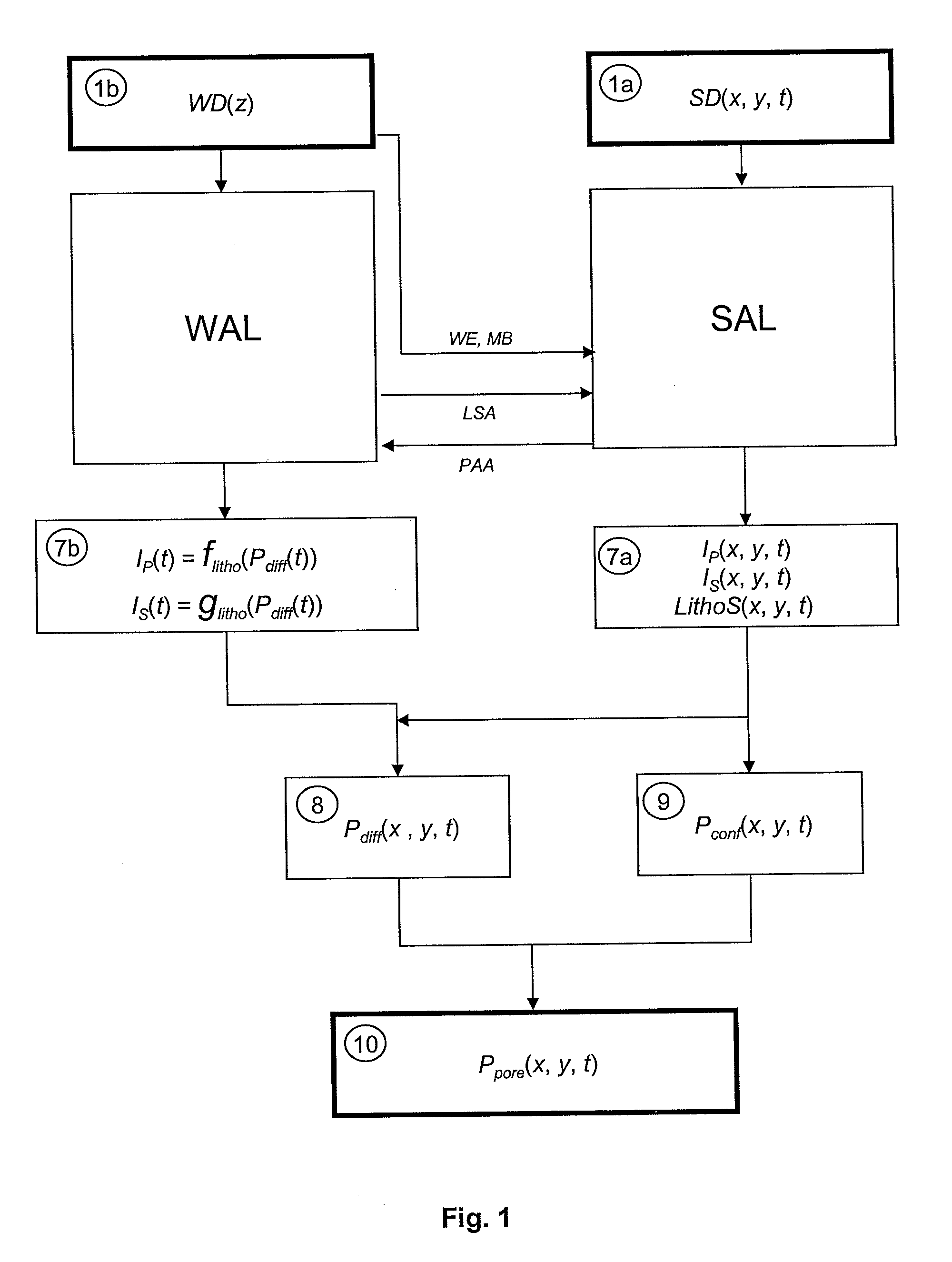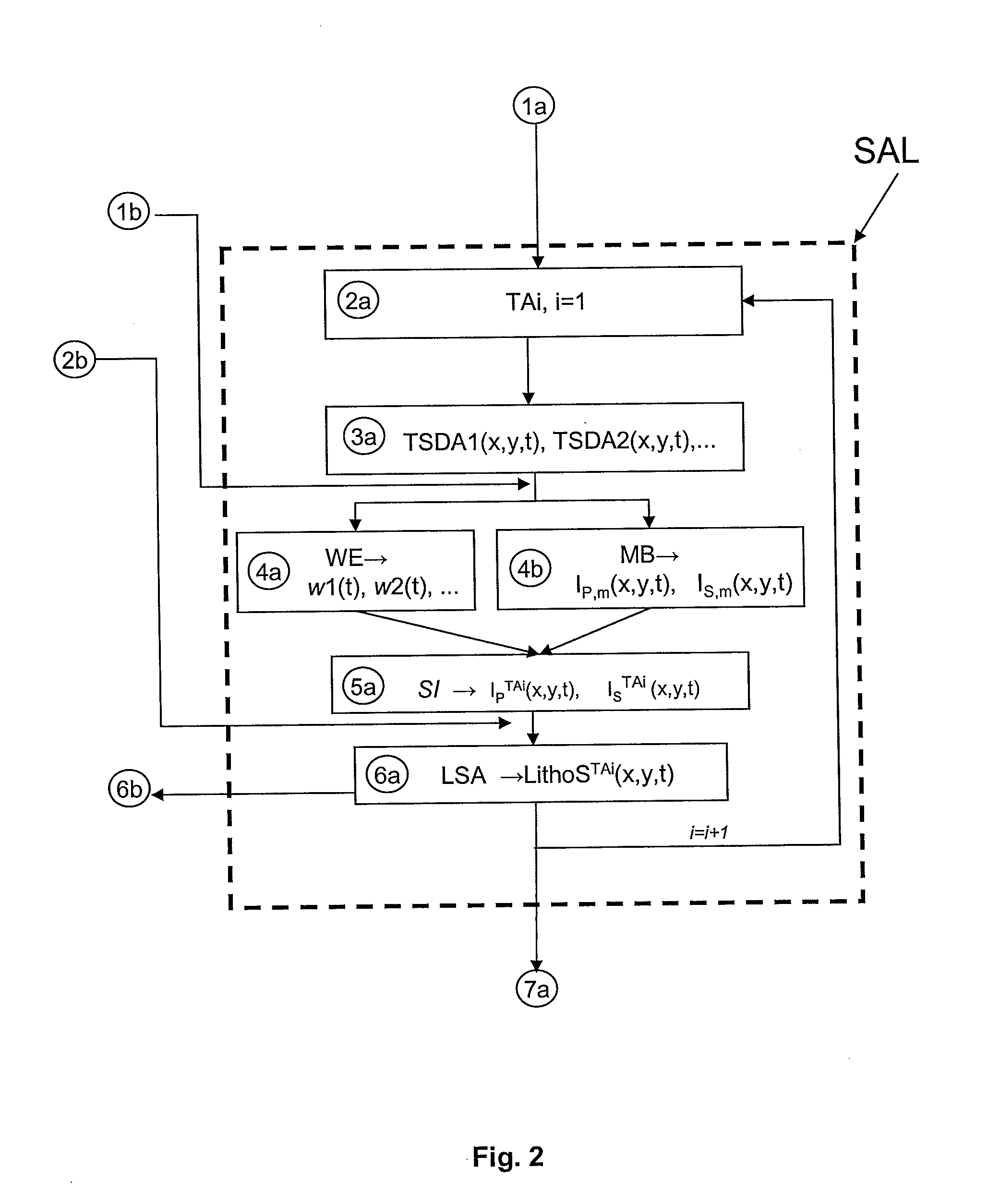Method for quantitative evaluation of fluid pressures and detection of overpressures in an underground medium
a fluid pressure and fluid detection technology, applied in seismology for waterlogging, instruments, reradiation, etc., can solve the problems of stress redistribution, fracture re-opening or possibly initiating hydraulic fracturing, and the presence of overpressure zones under exploration can have serious financial and sometimes human consequences,
- Summary
- Abstract
- Description
- Claims
- Application Information
AI Technical Summary
Benefits of technology
Problems solved by technology
Method used
Image
Examples
Embodiment Construction
[0054]The method allows to evaluate the fluid pressures of an underground zone from well data and seismic data. It mainly comprises the following six stages:
[0055]1) Defining time analysis intervals.
[0056]2) Processing the seismic data over each analysis interval: seismic impedance cubes and lithoseismic facies cube.
[0057]3) Processing the well data over each analysis interval: petro-acoustic relation between seismic impedance in wells and differential pressure in wells.
[0058]4) Determining a differential pressure cube (Pdiff(x,y,t)).
[0059]5) Determining a confining pressure cube (Pconf(x,y,t)).
[0060]6) Determining a fluid pressure cube (Ppore(x,y,t)).
[0061]The various stages of the method are diagrammatically shown in FIGS. 1 to 3. FIG. 1 is a general illustration of the various stages of the method. As described more in detail below, these stages consist of two interconnected subsets of stages, i.e., on the left side of the figure, the stages corresponding to the well data process...
PUM
 Login to View More
Login to View More Abstract
Description
Claims
Application Information
 Login to View More
Login to View More - R&D
- Intellectual Property
- Life Sciences
- Materials
- Tech Scout
- Unparalleled Data Quality
- Higher Quality Content
- 60% Fewer Hallucinations
Browse by: Latest US Patents, China's latest patents, Technical Efficacy Thesaurus, Application Domain, Technology Topic, Popular Technical Reports.
© 2025 PatSnap. All rights reserved.Legal|Privacy policy|Modern Slavery Act Transparency Statement|Sitemap|About US| Contact US: help@patsnap.com



